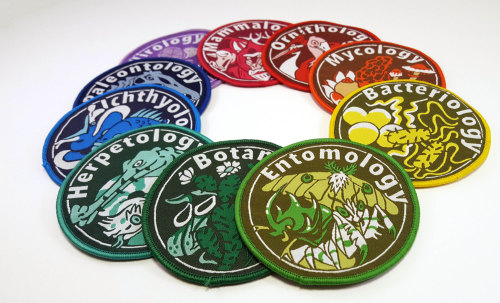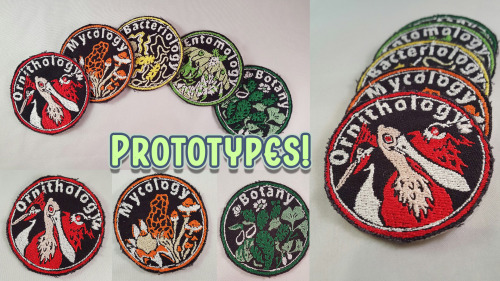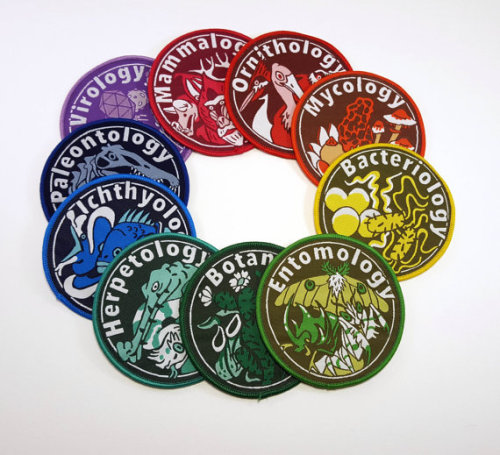Total Solar Eclipse: A Total Solar Eclipse Occurs When The Moon Completely Blocks The Solar Disk. In


Total Solar Eclipse: A total solar eclipse occurs when the Moon completely blocks the solar disk. In a total solar eclipse, the narrowest part of the path (where the Sun is completely blocked and the Moon casts its darkest shadow) is called the “zone of totality”.
Annular Solar Eclipse: When the Moon is farther away in its orbit than usual, it appears too small to completely cover the Sun’s disk. During such an event, a bright ring of sunlight shines around the Moon. This type of eclipse is a called an “annular” eclipse.
Partial Solar Eclipse: A partial solar eclipse occurs when Earth moves through the lunar penumbra (the lighter part of the Moon’s shadow) as the Moon moves between Earth and the Sun. The Moon does not block the entire solar disk, as seen from Earth.
Image Credit: http://apod.nasa.gov/apod/ap131108.html
More Posts from Theperpetualscholar and Others

Blood, Guts and Blow Flies
Forensic entomology is the study of insects/arthropods in criminal investigation. Insects are attracted to decomposing bodies and can lay their eggs inside of one. Studying the developing larval stages and insect population can help forensic scientists get a postmortem index (time of death). They are also able to tell if a body has been moved.
A timeline showing how insect activity relates to the stages of decomposition
Fresh stage (1-2 days after death): The first insects start arriving. Blow flies and flesh flies can be found arriving just minutes after death.
Bloated stage (2-7 days after): The abdomen of the decomposing body inflates and internal temperatures start to rise due to arthropod activity. The greatest number of diptera/flies are attracted at this stage.
Decay stage (5-13 days after): The body deflates and some of the diptera larvae leave the carcass to pupate.
Post-decay stage (10-23 days after): Most larvae leave and the body becomes a hotspot for arthropod activity.
Remains stage (18-90+ days after): The body dries up causing larval and adult diptera populations to decline.

Crime scene investigators are about to get a helping hand from our ancient ancestors. The earliest known synthetic pigment, Egyptian blue, is found in some of the paint on ancient statues, coffins, tomb walls, and amulets. Most other pigments long ago faded. Modern scientists, intrigued by its longevity, worked out Egyptian blue’s chemical composition decades ago. Recently it was discovered that it emits near-infrared radiation when exposed to certain kinds of light. Basically: it has rare, invisible luminescence.
And why does that help crime-stoppers? Egyptian blue can be dusted onto complicated surfaces where fingerprints are normally hard to retrieve. The surface is then photographed with a modified camera and a filter sensitive to Egyptian blue’s near-infrared rays. If fingerprints are there, they glow clearly in the resulting image. Science is amazing.

Figure 1. Bun (Lepus townsendii) approaching ideal bun form (ei. a perfect fluffy orb) over the course of 5.2 hours. Ambient temperature -6°C to -15°C.

28.05.17 // new week, new window 💭
6 TED-Ed lessons to watch on International Women’s Day
Happy International Women’s Day! Here’s a list of TED-Ed Lessons to watch as you celebrate all of the world’s women, past and present.

The genius of Marie Curie: Marie Skłodowska Curie’s revolutionary research laid the groundwork for our understanding of physics and chemistry, blazing trails in oncology, technology, medicine, and nuclear physics, to name a few. But what did she actually do? Shohini Ghose expounds on some of Marie Skłodowska Curie’s most revolutionary discoveries.

The contributions of female explorers: During the Victorian Age, women were unlikely to become great explorers, but a few intelligent, gritty and brave women made major contributions to the study of previously little-understood territory. Courtney Stephens examines three women – Marianne North, Mary Kingsley and Alexandra David-Néel – who wouldn’t take no for an answer (and shows why we should be grateful that they didn’t).

Equality, sports and Title IX: In 1972, U.S. Congress passed Title IX, a law which prohibited discrimination against women in schools, colleges, and universities — including school-sponsored sports. Before this law, female athletes were few and far between, and funding was even scarcer. Erin Buzuvis and Kristine Newhall explore the significance and complexity of Title IX.

The true story of Sacajawea: In the early 19th century, a young Agaidika teenager named Sacajawea was enlisted by explorers Meriwether Lewis and William Clark to aid her husband Toussaint Charbonneau as a guide to the Western United States. Karen Mensing debunks some of the myths that surround the familiar image of the heroic woman with a baby strapped to her back and a vast knowledge of the American wilderness.

Why should you read Virginia Woolf?: How best can we understand the internal experience of alienation? In both her essays and her fiction, Virginia Woolf shapes the slippery nature of subjective experience into words, while her characters frequently lead inner lives that are deeply at odds with their external existence. Iseult Gillespie helps make sense of these disparities to prepare you for the next time you read Virgina Woolf.

The pharaoh that wouldn’t be forgotten: Hatshepsut was a female pharaoh during the New Kingdom in Egypt. Twenty years after her death, somebody smashed her statues, took a chisel and attempted to erase the pharaoh’s name and image from history. But who did it? And why? Kate Green investigates Hatshepsut’s history for clues to this ancient puzzle.








BIG UPDATE!
I’ve finally finished my biological patches set! After many months of designing, editing, and trial and error, I’m proud to post up photos of the final products!
They are woven with bright, beautiful colors that will endure many washes and adventures to come. They’re only $8 in my store:
https://www.etsy.com/shop/Monsternium
Here are the first five patches in my biological patch set. Once all ten are made, the rainbow of studies will be complete! Each one is illustrated, digitized, and embroidered by me. Stay tuned for more! Next up is herpetology ;)

Today marks the birthday of Alfred Nier (1911-1994), a pioneer in the field of mass spectrometry. Here’s a brief mass spectrometry introduction! PDF here: http://wp.me/p4aPLT-1bw
Someone said "Are you really so stupid to think that Africa has the same technological advances as us? If they did they would probably have clean water and not live in houses made of sticks and mud. Get over yourself and stop being so ignorant."..... Below is a tiny collection of images of the Africa they refuse to show you..




ches






I’m sorry you’ve been made to believe that the whole of Africa is poor, I really am..
-
 gingnjuice liked this · 4 years ago
gingnjuice liked this · 4 years ago -
 aishatolba reblogged this · 7 years ago
aishatolba reblogged this · 7 years ago -
 hizrn liked this · 7 years ago
hizrn liked this · 7 years ago -
 tetra-atmosphere reblogged this · 7 years ago
tetra-atmosphere reblogged this · 7 years ago -
 ryebreadsss liked this · 8 years ago
ryebreadsss liked this · 8 years ago -
 green-has-moved-to-another-blog reblogged this · 8 years ago
green-has-moved-to-another-blog reblogged this · 8 years ago -
 green-has-moved-to-another-blog liked this · 8 years ago
green-has-moved-to-another-blog liked this · 8 years ago -
 babyloncam liked this · 8 years ago
babyloncam liked this · 8 years ago -
 teacupthighs liked this · 8 years ago
teacupthighs liked this · 8 years ago -
 eeveendei liked this · 8 years ago
eeveendei liked this · 8 years ago -
 zyrina liked this · 8 years ago
zyrina liked this · 8 years ago -
 theperpetualscholar reblogged this · 8 years ago
theperpetualscholar reblogged this · 8 years ago -
 uhlaurenwtf-blog liked this · 8 years ago
uhlaurenwtf-blog liked this · 8 years ago -
 space-space-baby-blog reblogged this · 8 years ago
space-space-baby-blog reblogged this · 8 years ago -
 inotterwords reblogged this · 9 years ago
inotterwords reblogged this · 9 years ago -
 tvwint liked this · 9 years ago
tvwint liked this · 9 years ago -
 sirhipo-blog reblogged this · 9 years ago
sirhipo-blog reblogged this · 9 years ago -
 sirhipo-blog liked this · 9 years ago
sirhipo-blog liked this · 9 years ago -
 memesfrlfe-blog liked this · 9 years ago
memesfrlfe-blog liked this · 9 years ago -
 arcadiagalaxiaofficial-blog reblogged this · 9 years ago
arcadiagalaxiaofficial-blog reblogged this · 9 years ago -
 atlas-the-worldbuilder liked this · 9 years ago
atlas-the-worldbuilder liked this · 9 years ago -
 shoutingintoavoid reblogged this · 9 years ago
shoutingintoavoid reblogged this · 9 years ago -
 keepuppuff liked this · 9 years ago
keepuppuff liked this · 9 years ago -
 ghost-cosmonaut liked this · 9 years ago
ghost-cosmonaut liked this · 9 years ago -
 sekeshawty liked this · 9 years ago
sekeshawty liked this · 9 years ago -
 blythefan600 reblogged this · 9 years ago
blythefan600 reblogged this · 9 years ago -
 tuesdayswithmardi liked this · 9 years ago
tuesdayswithmardi liked this · 9 years ago -
 chocolatemastication liked this · 9 years ago
chocolatemastication liked this · 9 years ago -
 ptrprkrd liked this · 9 years ago
ptrprkrd liked this · 9 years ago -
 alycab-isk8 reblogged this · 9 years ago
alycab-isk8 reblogged this · 9 years ago -
 superclustah liked this · 9 years ago
superclustah liked this · 9 years ago -
 inspiredlunacy404 reblogged this · 9 years ago
inspiredlunacy404 reblogged this · 9 years ago -
 inspiredlunacy404 liked this · 9 years ago
inspiredlunacy404 liked this · 9 years ago -
 xxlorniklexx liked this · 10 years ago
xxlorniklexx liked this · 10 years ago -
 12quotesandmorequotes liked this · 10 years ago
12quotesandmorequotes liked this · 10 years ago -
 motherfucking-space-facts reblogged this · 10 years ago
motherfucking-space-facts reblogged this · 10 years ago -
 guaposauce liked this · 10 years ago
guaposauce liked this · 10 years ago -
 thatonemarvelousplace reblogged this · 10 years ago
thatonemarvelousplace reblogged this · 10 years ago -
 suppressedgiggles liked this · 10 years ago
suppressedgiggles liked this · 10 years ago -
 angelicmoon-blog liked this · 10 years ago
angelicmoon-blog liked this · 10 years ago -
 nina-mercvrio liked this · 10 years ago
nina-mercvrio liked this · 10 years ago -
 ipk26 liked this · 10 years ago
ipk26 liked this · 10 years ago -
 just-gorgeous-girls liked this · 10 years ago
just-gorgeous-girls liked this · 10 years ago
